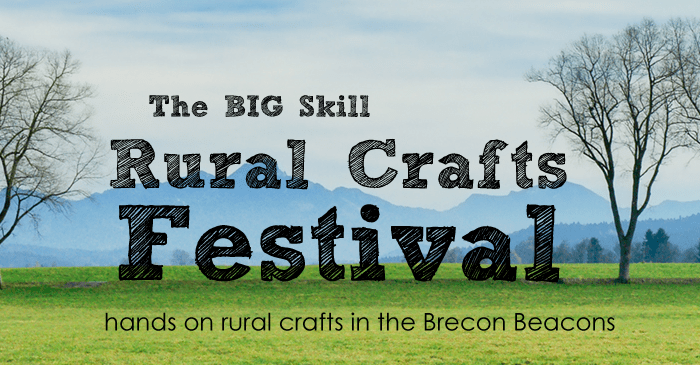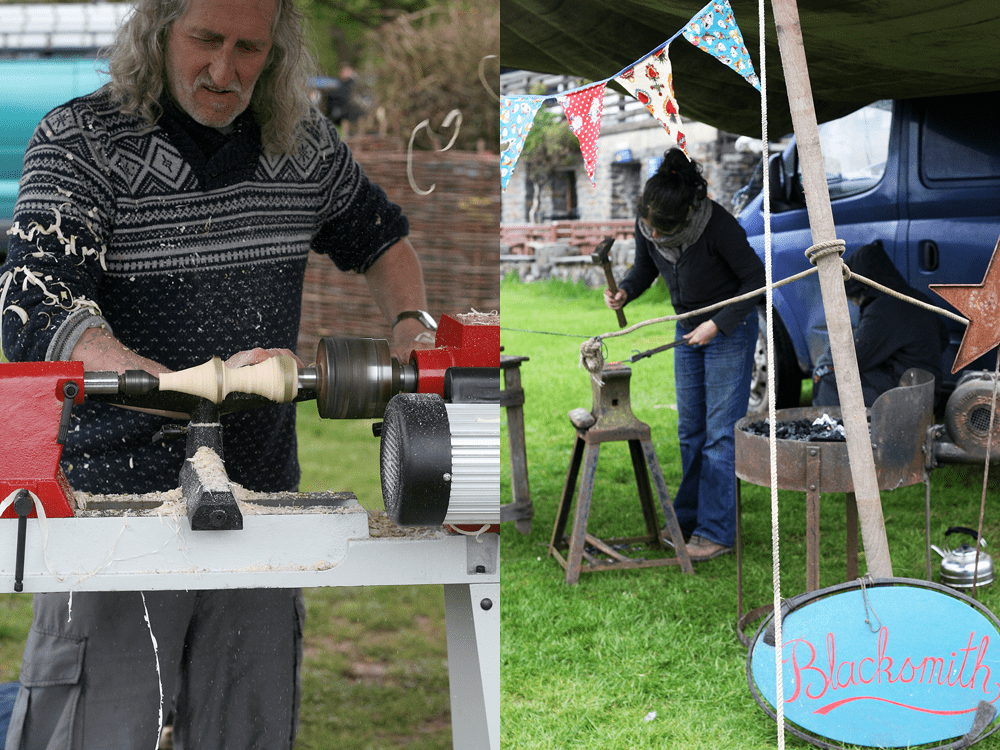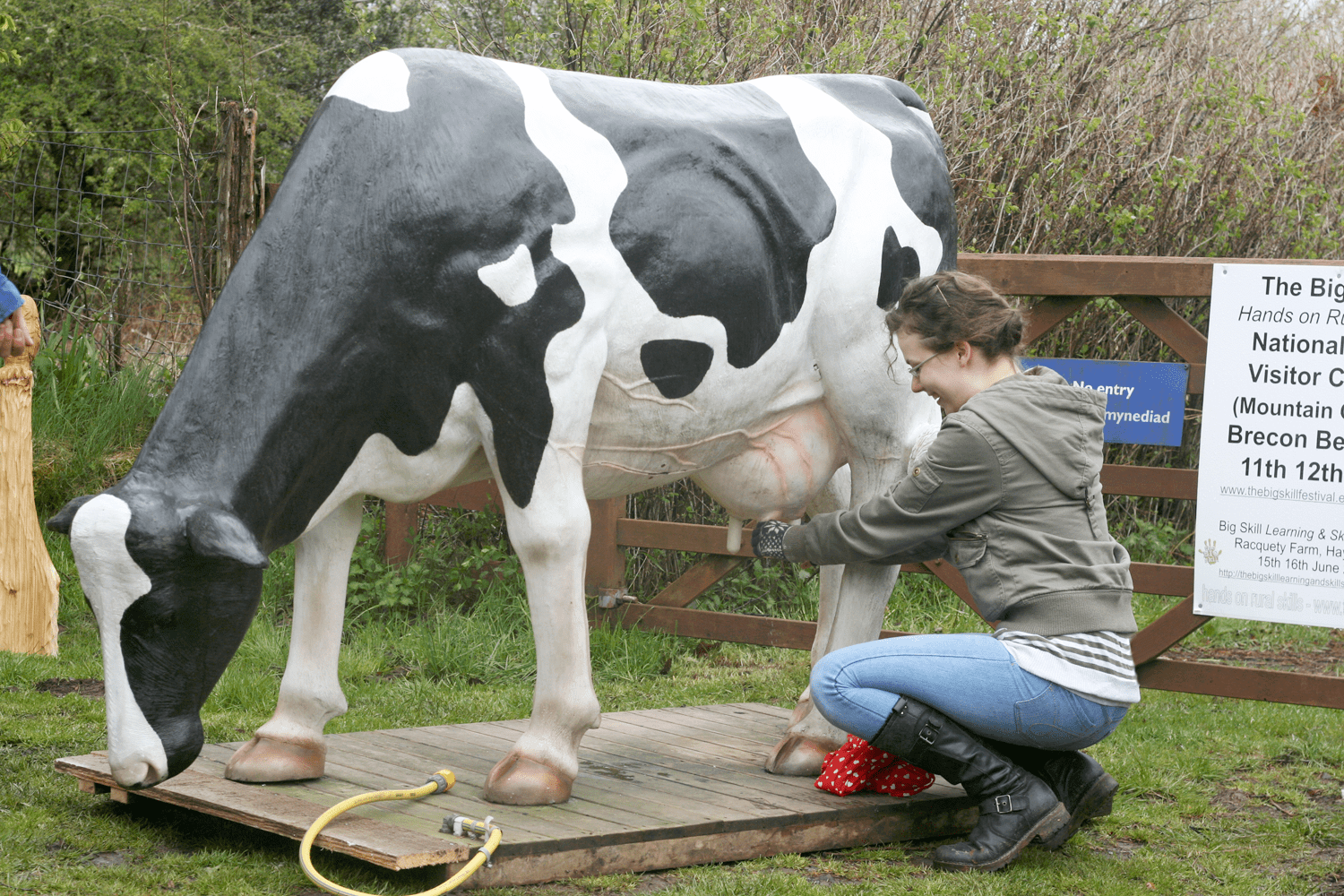Keeping crafts alive

On Saturday I went to a rural craft event in Brecon.
It was a rainy, wind-blowing weekend but rural crafters are hardy folk!
The craft event was organised by The Big Skill. As a social enterprise its purpose is to keep rural skills alive. Last weekend the focus was on crafters and makers demonstrating their skills. In an industry where many crafts are being replaced by machines, it’s wonderful to see people use their hands!

I love the idea of keeping rural crafts alive, so I volunteered my skills as photographer. It was my first proper stint at event photography, and it was a lot of fun once I got over my nerves! Carrying my camera gave me the perfect excuse to chat to everyone about their work.
As I’ve hurdled through learning one new craft a month, I’ve seen a lot of mixed reactions from professional crafters about someone learning their craft. Some of them are excited, and recommend workshops. Some have even volunteered their help.
But most surprisingly, some crafters have seen it as a threat. Someone else learning the skills they use to pay their bills means more competition.
Technically, yes. But there’s more to it than that.

You might have heard of Alabama Chanin. It’s an American business selling hand-sewn clothing and home decor — with prices to match the labour. And, in a rather surprising move, Alabama Chanin released several DIY books that included patterns for some of their items. For $35 you can buy the book with patterns for dresses that would cost you hundreds.
In this fantastic interview, Natalie Chanin talks about that move for her business:
![]() Early in my journey I realized that sewing traditions … were dying in my community – and communities all over. Very soon after coming home to begin my work with hand sewing, it became clear that it was important to begin to collect stories and techniques about these traditions and to work towards not only incorporating them in my work but using my work as a means towards cultural preservation. … What is interesting is that after the publication of the two books and embracing this open-source philosophy, [highlight bg=”#efc28a” color=”#000000″]many people finally understood why our garments are worth so much.[/highlight]”
Early in my journey I realized that sewing traditions … were dying in my community – and communities all over. Very soon after coming home to begin my work with hand sewing, it became clear that it was important to begin to collect stories and techniques about these traditions and to work towards not only incorporating them in my work but using my work as a means towards cultural preservation. … What is interesting is that after the publication of the two books and embracing this open-source philosophy, [highlight bg=”#efc28a” color=”#000000″]many people finally understood why our garments are worth so much.[/highlight]”
I first heard of Natalie’s work because of the Hello Etsy conference. Here’s another interview with her:
Natalie Chanin interview @ Hello Etsy 2011 Berlin from Hello Etsy on Vimeo.
* * *
Learning new crafts hasn’t just given me new skills. It’s given me more appreciation and awareness for the skills of professionals working with those crafts. Instead of thinking a £5 amigurumi figure is expensive, I’m shocked that someone can sell their work for so little. I admire beautiful calligraphy all the more now that I can recognise good talent.
And my goodness, don’t get me started on embroidery. Beautiful handmade stitches take time.
Like Natalie said, I finally understand why these crafts are worth so much.

Before we left Brecon on Saturday, my husband snapped a photo of me milking ‘Bessie the Cow’.
And if you’ve ever tried to make a handmade sweater with natural yarn, you know it’s not easy to make £80 worth of wool look good without hours of experience. Trying it yourself makes a £200 handmade wool sweater look like a bargain.
My point is, [highlight bg=”#b9ddfd” color=”#000000″]don’t be scared of teaching people your craft.[/highlight] It keeps it alive. Not just as a skill, but as something people understand and appreciate.
It’s easy to appreciate dance and beautiful singing, because we’ve all tried it. It’s easy to love good cooking. And guess what? Restaurants are still around even though everyone has a kitchen.
Why not try to get that same sort of appreciation for craft?
(And no one said you had to teach for free!)
All the best,
![]()






